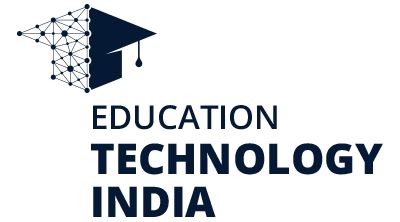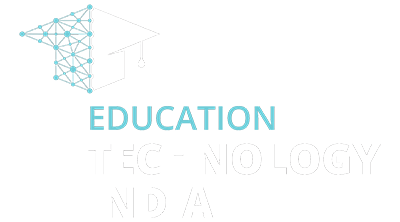Teachers can enhance the effectiveness of AI edtech tools by prioritizing their needs and exploring the potential benefits during the selection process.

In 2023, generative AI emerged prominently, bringing with it widespread discussions on doomsday scenarios, shifts in AI company dynamics, and contemplation on the consequences of accelerated AI technologies on various aspects like work, environment, and education. Users in the education sector, including teachers, students, staff, and administrators, engaged with AI edtech tools for tasks such as organization, writing, research, and form completion. The experiences varied from delight and excitement to frustration and concern, as the education landscape saw a surge in products branding themselves as “AI-powered” to seize the momentum of AI’s prominence.
Simultaneously, several anticipated AI advancements in education failed to materialize as expected. Initially prohibiting ChatGPT on school-owned devices, school districts gradually shifted towards providing guidance for using AI tools. Contrary to predictions, regular utilization of AI tools by educators and students remained more limited. Despite the widespread availability of AI tools, there was no significant rise in cheating behaviors among students.
As we embark on a new year, it is crucial to shift our focus from contemplating the potential implications of AI in education to how educators can currently leverage AI technologies. Numerous possibilities exist, ranging from direct interaction between educators and students to supporting back-end functions like record-keeping and lesson planning. Regardless of the application, the emphasis should shift from the technology itself to how it can empower quality instruction. This involves aiding teachers in core instructional areas or providing them with the time and resources to deliver impactful instruction.
AI-powered educational technology tools have the potential to enhance instructional effectiveness
In a landscape where AI is pervasive, educators, often fatigued and unsure about evaluating new tools, find it beneficial to view AI trends through the perspective of “technology-enabled instruction.” This emerging term goes beyond mere technology integration in the classroom, focusing on when and how teachers use technology in ways that research indicates improve learning outcomes.
To comprehend the potential value of an AI tool for fostering tech-enabled instruction, educators and administrators can consider five identified power boosts that technology in instruction can offer:
- Personalization, differentiation, and customization to address learner needs.
- Curation, availability, accommodation, and accessibility of vetted educational materials and learning environments.
- Student engagement, interest, and motivation.
- Communication, collaboration, and relationship-building.
- Learning analytics.
While some AI tools are adept at harnessing these instructional impact areas, others may not be as effective. Most useful tools may not align with all areas, focusing instead on a single aspect or freeing up teacher time for concentration. This alignment becomes a crucial consideration when educators and administrators assess the appropriateness of AI-powered tools for impactful technology-enabled instructional practices. What questions should educators pose to evaluate alignment between an AI-powered edtech tool and these power boost areas for impactful technology-enabled instructional practices? We delve into five critical questions.
Can educators use the tool for differentiation?
The concept of personalization in enhancing learning outcomes predates modern educational technology and doesn’t necessarily require the use of technology. Nevertheless, researchers highlight several ways in which teachers leveraging technology for differentiation can uniquely contribute to advancing student learning. These include scaffolding, employing diverse assessment methods, offering immediate feedback opportunities, and enabling teachers to allocate their time more efficiently.
While there are lingering questions about the effectiveness of AI tools, they have the potential to simplify differentiation and customization for enhanced learning. For instance, Khan Academy’s chatbot, Khanmigo, streamlines the process by providing students with responses directly related to their queries, eliminating the need to navigate through extensive material. Additionally, AI tools might better grasp contextual factors affecting all learners, a capability traditional adaptive systems may not fully achieve.
Does the tool provide access to verified educational resources?
The presence of verified educational materials on edtech platforms alleviates teachers from the task of compiling resources from various, often unverified, sources. Researchers have demonstrated that this compilation is crucial for advancing student learning, particularly in supporting learner variability and ensuring relevance in learning.
While curation can be achieved without technology, technology serves as a clear accelerator in this process. It enables learners to access materials that might be challenging to find in print and provides multiple avenues for interacting with the content. AI tools, in particular, have the potential to enhance open educational resource collections by tailoring them for diverse teaching scenarios. For instance, the ISTE + ASCD’s walled garden chatbot exclusively draws on materials developed by the learning organization. When evaluating such tools, it becomes crucial for educators to comprehend how the technology curates, verifies, and authenticates customized collections.
Can the tool assist educators in fostering student interest?
Studies indicate that students tend to excel academically in subjects they find interesting. While teachers can adopt various non-technological methods to spark student interest, technology often simplifies this task. For instance, under the guidance of proficient educators, students can utilize specific databases or the internet to independently research topics of personal interest, accessing sources that may be unavailable without technology.
Intelligent tutoring systems, often dubbed as such, might have the potential to streamline this process by providing students with guidance on evaluating sources aligned with their interests. This, in turn, allows teachers to focus on cultivating deeper student engagement. Naturally, educators must consider factors such as accuracy, bias, and user-friendliness when assessing the effectiveness of such tools.
Does the tool create opportunities for establishing relationships?
According to a Search Institute report, enduring teacher-student relationships contribute to improved long-term learning outcomes. Similarly, when educators establish strong connections with families, students are more likely to experience positive advancements over the long term.
While it may initially appear counterintuitive, technology can play a role in enhancing relationships among people. Consider a video platform offering automatic translation services during a meeting between a teacher and a parent discussing a student’s progress. Additionally, envision a technological tool enabling students to express their emotions, signaling opportunities for teachers to follow up.
AI tools can further enhance the impact of such tools. For instance, AI-powered text messages from platforms like AllHere and Family Engagement Lab empower educators to more efficiently engage and build relationships with historically underserved families.
Can the tool provide meaningful learning analytics?
The potential for data generation and analysis in the realm of learning is a fundamental aspect of the advantages derived from incorporating technology into instructional methods. However, for technology to fulfill its potential, the data produced by a program must not only be valuable but also presented in a timely manner, enabling educators to take effective action. For instance, a teacher might analyze data from an adaptive learning system to identify areas where students are struggling and determine suitable interventions. However, a basic data point, such as the amount of time a student spent on the program, may be less useful.
AI technologies hold the promise of revolutionizing learning analytics, influencing not only what is taught and to whom but also the very nature of instructional delivery. For instance, AI-powered tools like TeachFX offer scalable teacher feedback, presenting opportunities for enhancing instructional practices.






